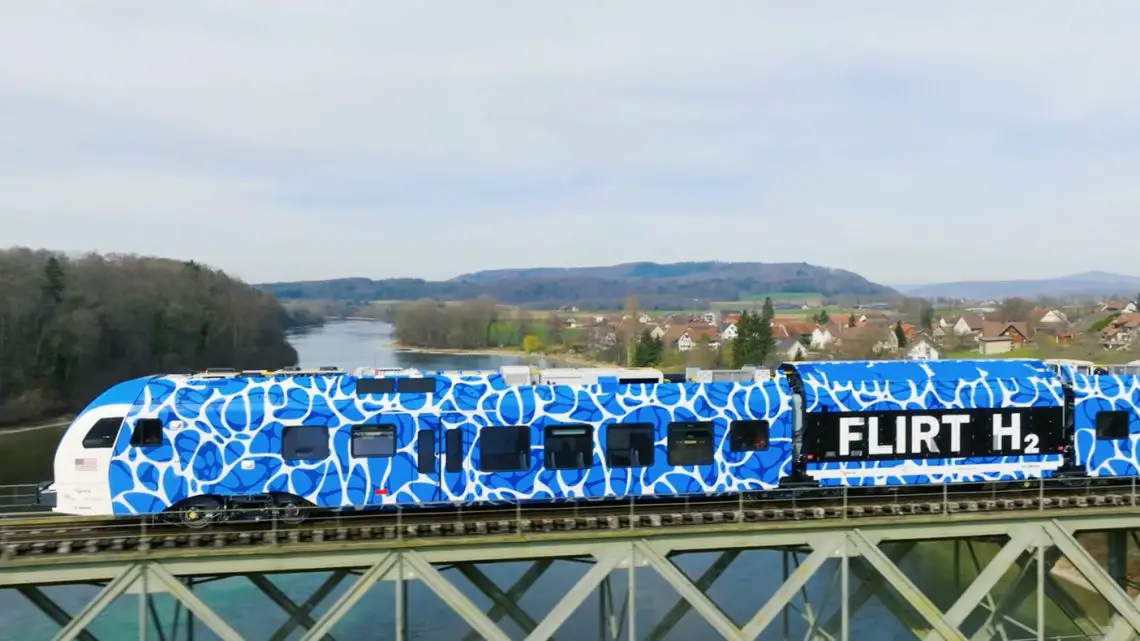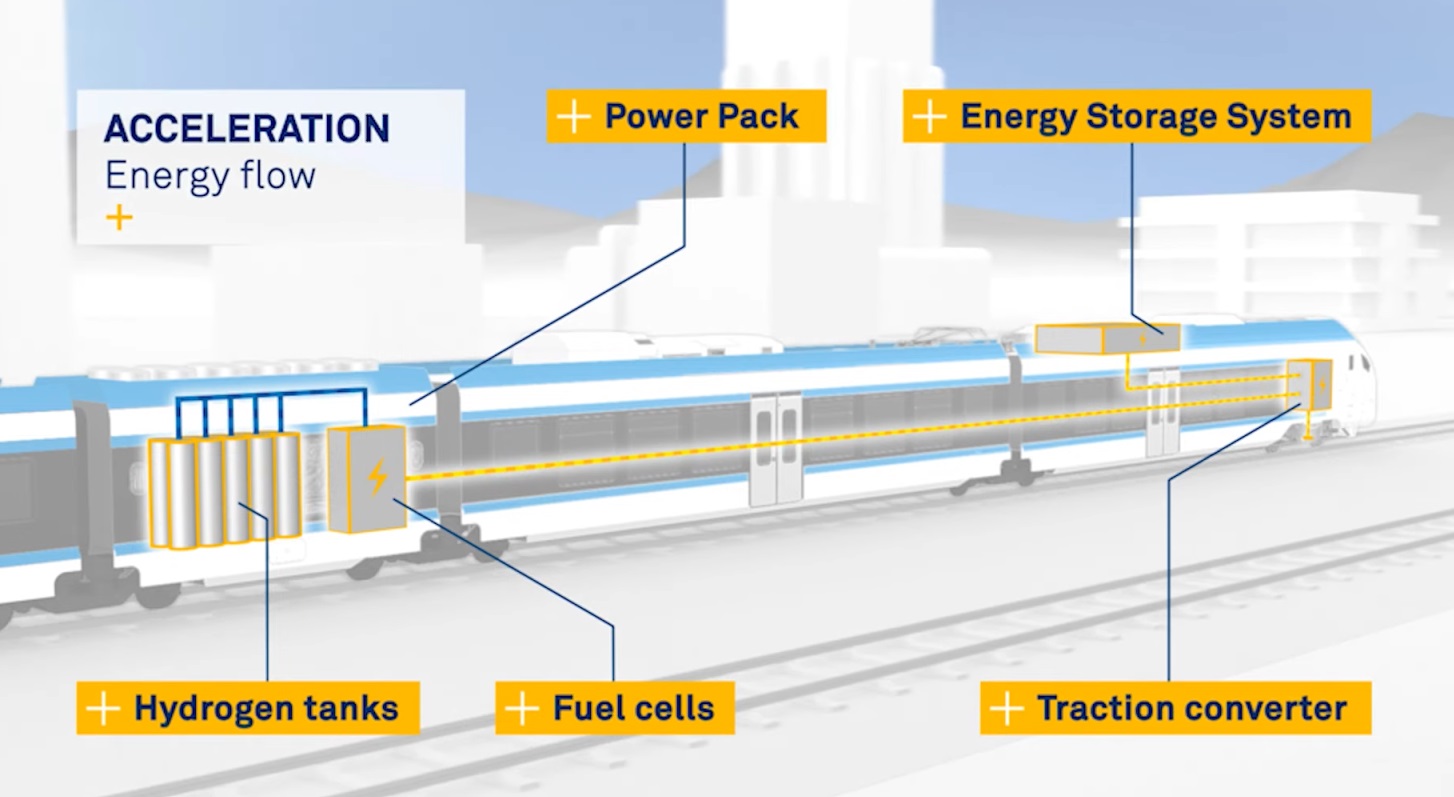
Stadler’s Hydrogen Train FLIRT H2 Achieves a New Guinness World Records Title
March 26, 2024 0 By Jake MartinIn an unparalleled milestone for sustainable rail transport, Stadler has proudly announced that its pioneering FLIRT H2 train has entered the Guinness World Records for an extraordinary feat. Distinguished for covering the longest distance of 1,741.7 miles (2,803 kilometers) by a pilot hydrogen fuel cell electric multiple unit passenger train without needing to refuel or recharge, the FLIRT H2’s triumph heralds a new era in eco-friendly travel.
Stadler’s Innovative Leap Forward
With innovation at the core of Stadler’s success, the revelation of FLIRT H2’s record-setting accomplishment emerges as a palpable testament to the company’s commitment to technology and sustainability. The quest for extraordinary solutions led to the exquisite design integration of fuel cells and hydrogen storage systems into the revered FLIRT commuter train product line. Careful and extensive testing of these novel solutions was conducted, first on Swiss turf and subsequently on a testing track in Colorado, USA.
In an effort to demonstrate the exceptional reliability and capacity of this cutting-edge conveyance, Stadler set forth on a mission to establish a new records title. The ambitious endeavor was meticulously observed by the Guinness World Records adjudication team. Dr. Ansgar Brockmeyer, EVP of Marketing and Sales, highlighted the significance of the event stating, “This world record establishes the ideal performance range of our hydrogen version of the best-selling FLIRT Electric Multiple Unit, the FLIRT H2. This is a monumental achievement from our entire team and we are very proud to hold another record title.”
A Historic Journey Unfolds
The historic voyage commenced on the evening of March 20, 2024, when the FLIRT H2 embarked on its maiden laps around the test track. Through the night and following day, Stadler engineers and ENSCO staff worked in shifts to ensure the trial’s success, culminating the record run at 5.23 p.m. MST on March 22, 2024. Over 46 arduous hours and one tank filling later, the FLIRT H2 passed the finish line, officially declared as the world’s longest-traveled hydrogen-powered passenger train between recharges.
A Legacy of Sustainable Innovation
Echoing the environmental stride made by the Toyota Mirai’s recent 845-mile fuel cell vehicle record, Stadler’s FLIRT H2 signifies the company’s parallel quest toward zero-emission transportation. The attempt was executed with precision at the ENSCO test center in Pueblo, Colorado, under the same rigorous type test procedure, ensuring transparent and exact evidence throughout the record-setting experience.
The FLIRT H2, destined for San Bernardino County Transportation Authority (SBCTA), is not Stadler’s first alternative propulsion vehicle to achieve Guinness World Records recognition. In December 2021, the battery-powered variant, FLIRT Akku, etched its name in history by marking the longest trip with a battery multiple unit in pure battery mode, covering 224 kilometers on German soil.
Market Reception and International Impact
The global push for sustainable public transportation fuels a heightened interest in viable alternatives like Stadler’s FLIRT H2 hydrogen train. Following a fresh order for additional hydrogen units in California and pioneering production of narrow-gauge hydrogen trains, Stadler is enthused by market reception. Securing contracts for a total of 15 hydrogen-powered vehicles, Stadler envisions its green footprint expanding across Italian railways with operators Ferrovie della Calabria (FdC) and ARST having confirmed their options.
Stadler stands at the forefront of an advancing railway industry, reshaping how we envisage travel and environmental stewardship through its innovative engineering fortitude. The FLIRT H2’s record signifies more than just a technical triumph – it is a beacon for the sustainable, emission-free journeys that future generations will come to expect as the standard for transportation.



 HFN News is your leading source for fresh hydrogen and renewable energy updates. Amid the fast-paced growth of hydrogen companies, we provide top-notch news and insights about this exciting sector. Our coverage spans from hydrogen cars to global sustainable initiatives, and we highlight the latest in green jobs and developing hydrogen hubs. We invite you to share your local hydrogen news and explore today’s renewable energy job listings on our site. Thanks for choosing HFN News as your trusted guide to the hydrogen and renewable energy world!
HFN News is your leading source for fresh hydrogen and renewable energy updates. Amid the fast-paced growth of hydrogen companies, we provide top-notch news and insights about this exciting sector. Our coverage spans from hydrogen cars to global sustainable initiatives, and we highlight the latest in green jobs and developing hydrogen hubs. We invite you to share your local hydrogen news and explore today’s renewable energy job listings on our site. Thanks for choosing HFN News as your trusted guide to the hydrogen and renewable energy world!